From antiquity until the Medieval period, jewelry was more than a means of adornment. Gemstones were believed to have magical and medicinal properties that could protect against illness and misfortune. Emeralds, for example, were thought to be beneficial to human eyes but fatal to the eyesight of serpents. The sapphire would prevent poverty and betrayal and ensure chastity.
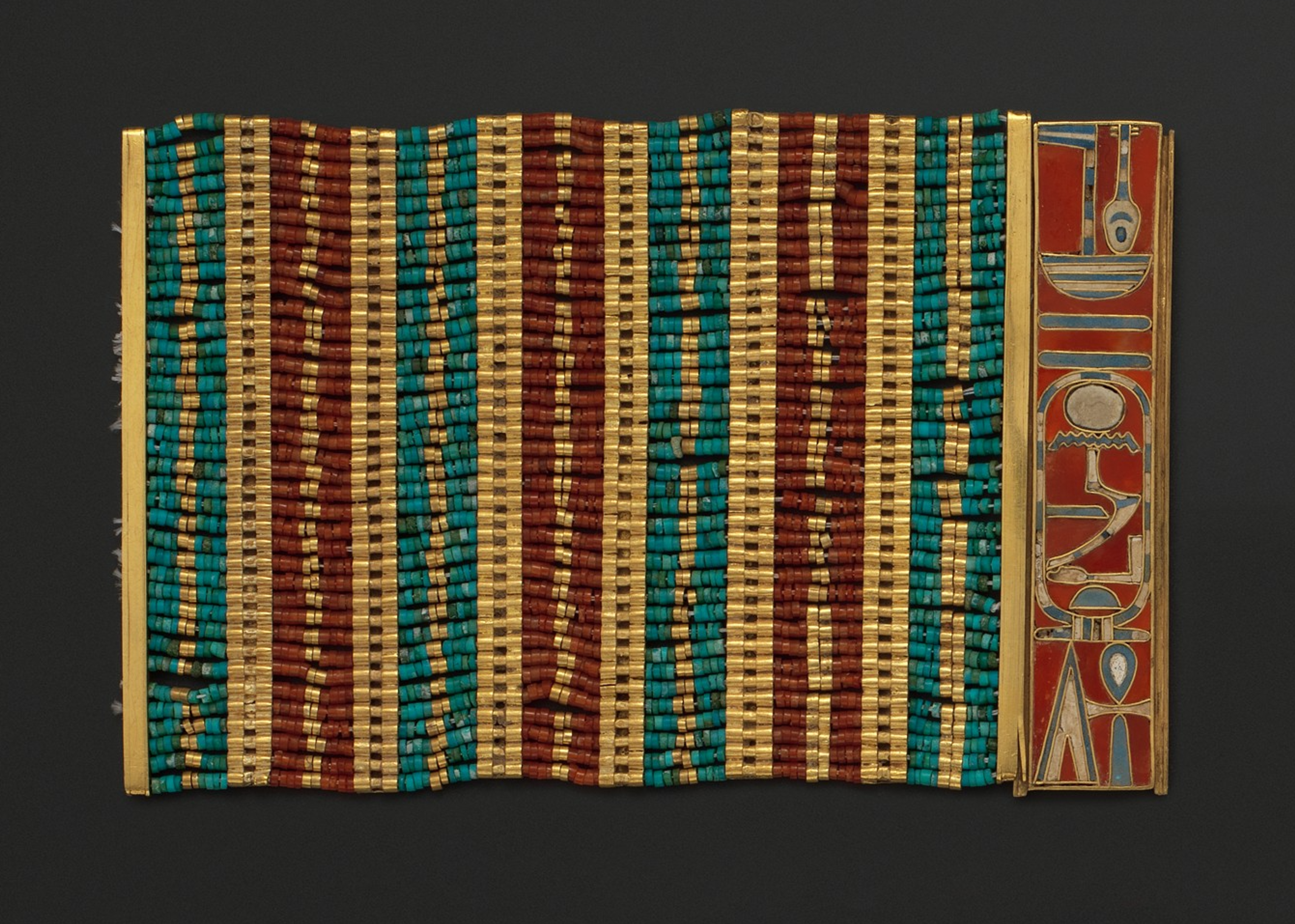
The clasps of this bracelet are inlaid with carnelian and blue and...

Green glass pendant, 600-500 B.C. The Victoria & Albert Museum.
“The difference between false memories and true ones is the same as for jewels: it is always the false ones that look the most real, the most brilliant.” — Salvador Dali (1904-1989)

Greek Dolphin head earrings accented with three paste beads, 2nd-1st century B.C....
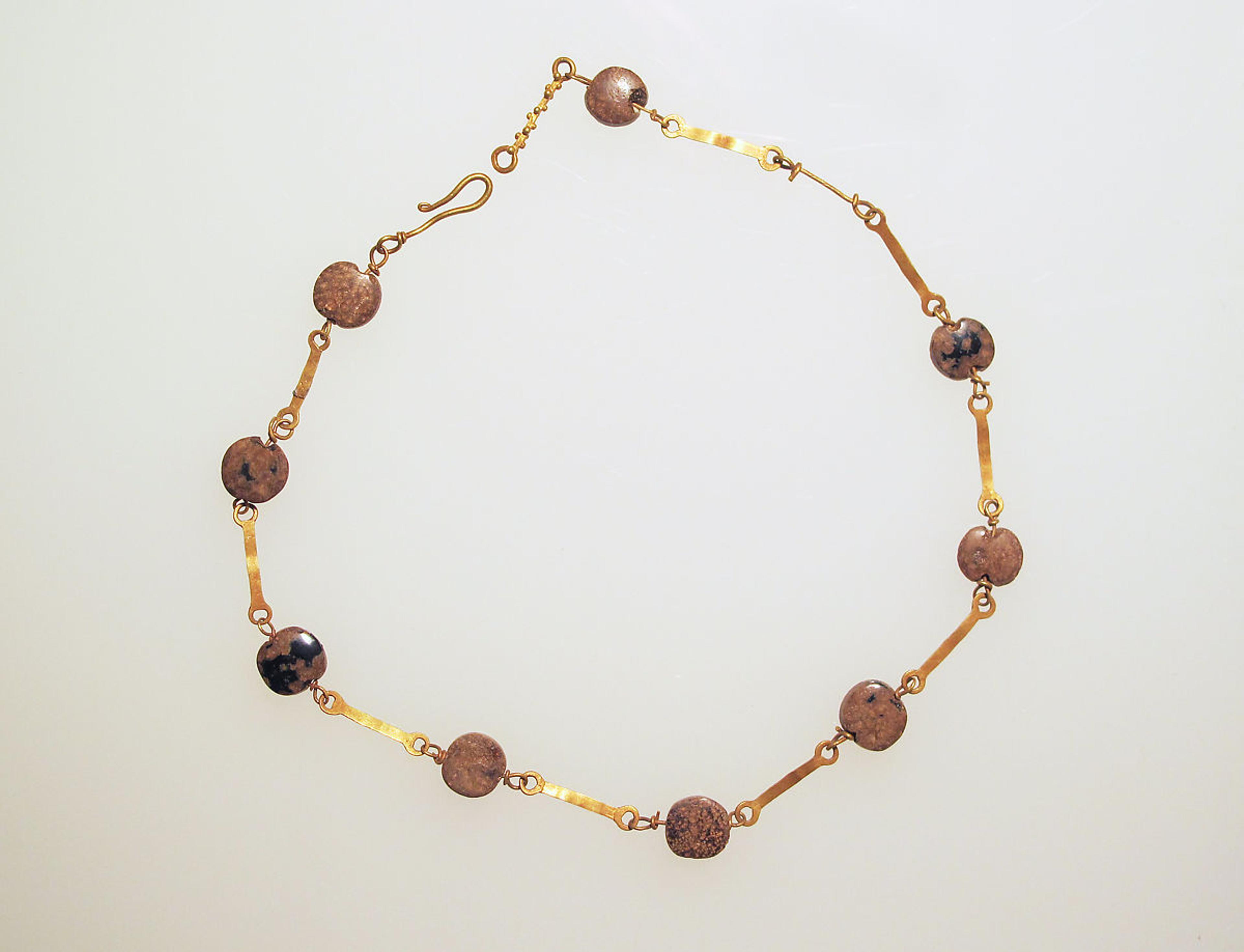
Roman necklace with paste beads. 2nd century A.D. Metropolitan Museum of Art.
“There is no fraud or deceit in the world which yields greater gain and profit than that of counterfeiting gems.” — Pliny the Elder, Roman author, AD 23/24-79
For ancient egyptians, the connection between a material and its protective qualities was so strong that it was built into their language. The word for lapis lazuli was synonymous with joy, while the word for delight was the same as the word for turquoise. However, it wasn’t only the materials that held significance, the colors were equally important. Even the most high-end jewelry might include some faux-gems, often crafted from glass. This enabled sought-after colors to be represented even if they were unobtainable in a specific gemstone.

Cuff bracelet decorated with cats. The gold bracelet is accented with carnelian,...
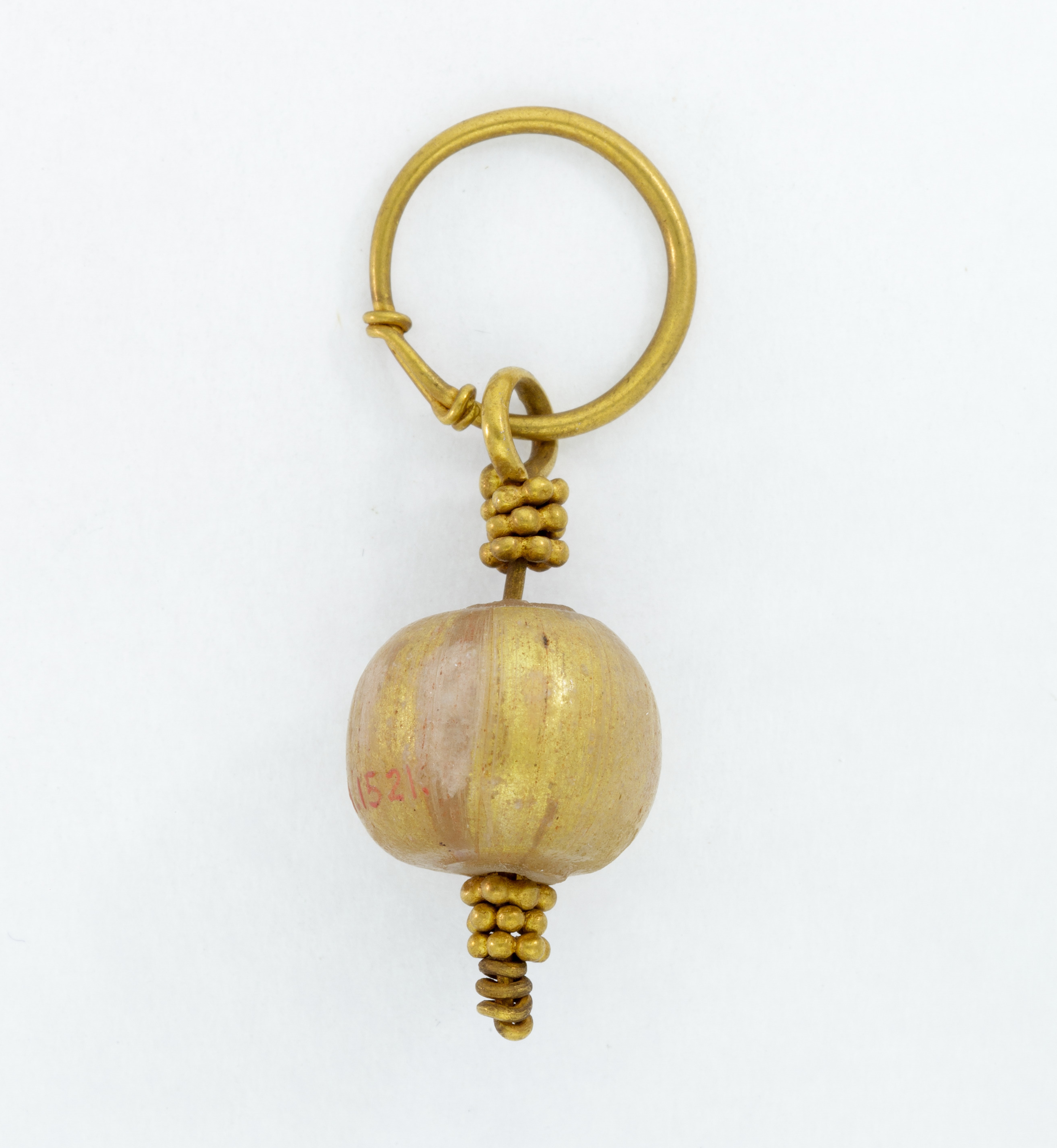
Gilded or silvered glass was popular from mid-first century B.C. to the...
Important Colors in Ancient Egypt
Red: Anger or fire, but also life forces (like the sun and blood). To do “red things” was to do evil.
Blue: fertility, rebirth and protection.
Yellow: the eternal and purity.
Green: life, growth and resurrection. To do “green things” was to do good deeds.
White: ritual purity and the sacred.
Black: night, death and fertile soil.
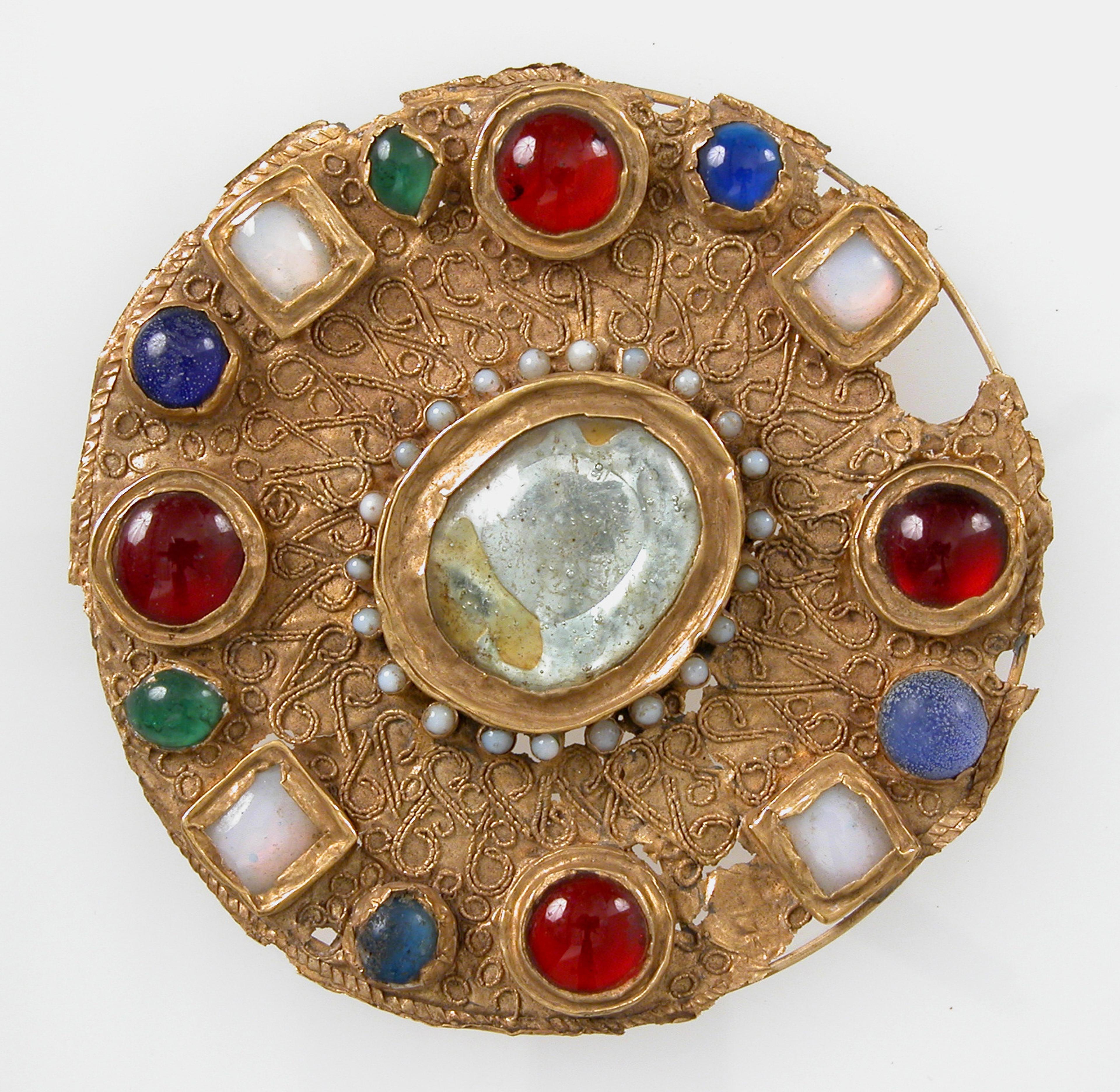
Glass stones set in a disk brooch, c. 7th century. The Metropolitan...
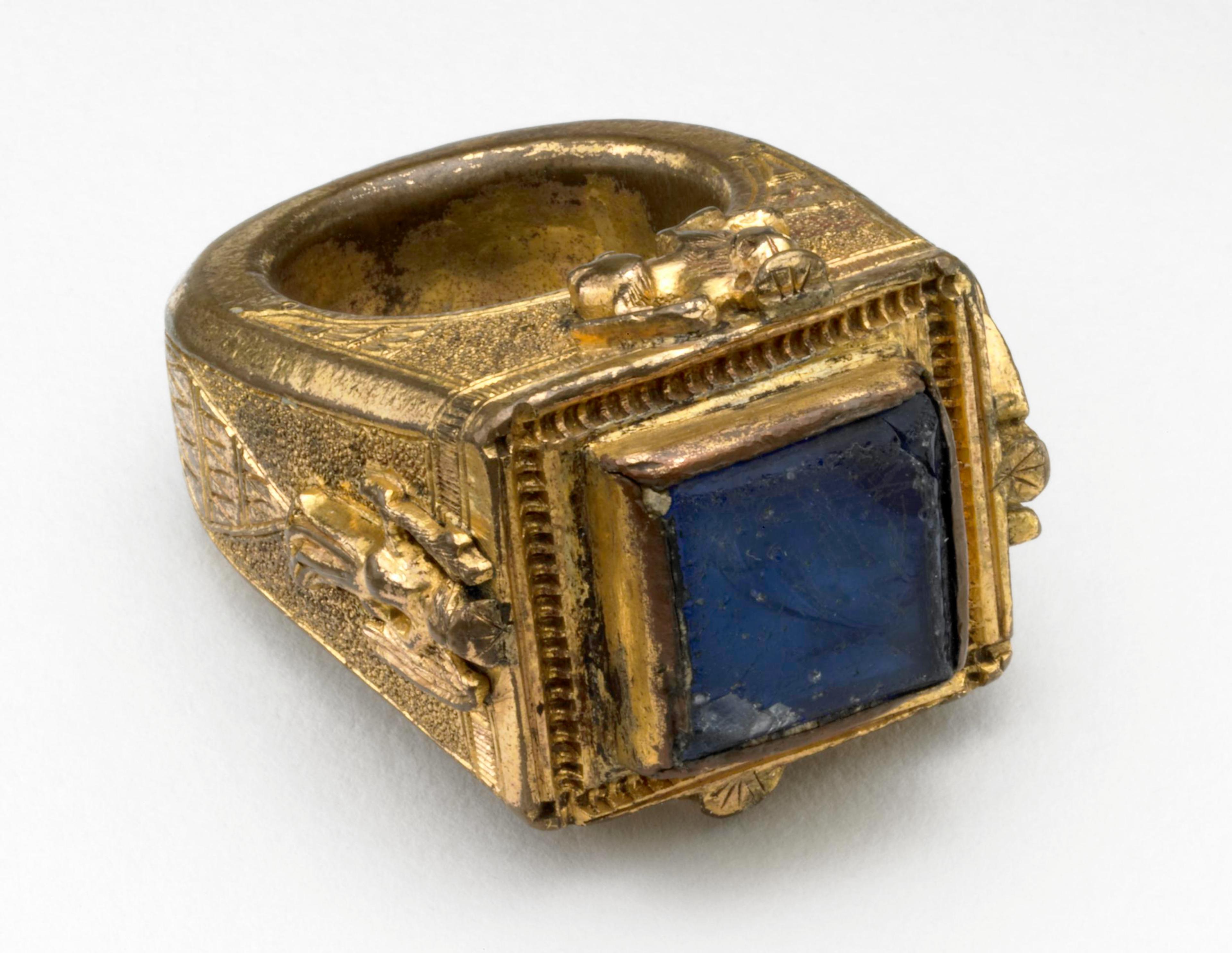
Surviving medieval glass jewelry is extremely rare. It wasn’t until the Renaissance...
Later, as the Roman army spread across Europe, so did its glass making skills. For those early glassmakers, their success depended on their ability to imitate precious stones. By the Middle Ages, the glass was, in fact, treated as extremely precious. (Glass preserved in cathedrals was frequently mounted in gold or silver.) In jewelry, as long as the color was vivid, it matter little whether the stone used was imitation or natural. Glass was often preferred because it provided a more intense color, with no imperfections, and little size restrictions.
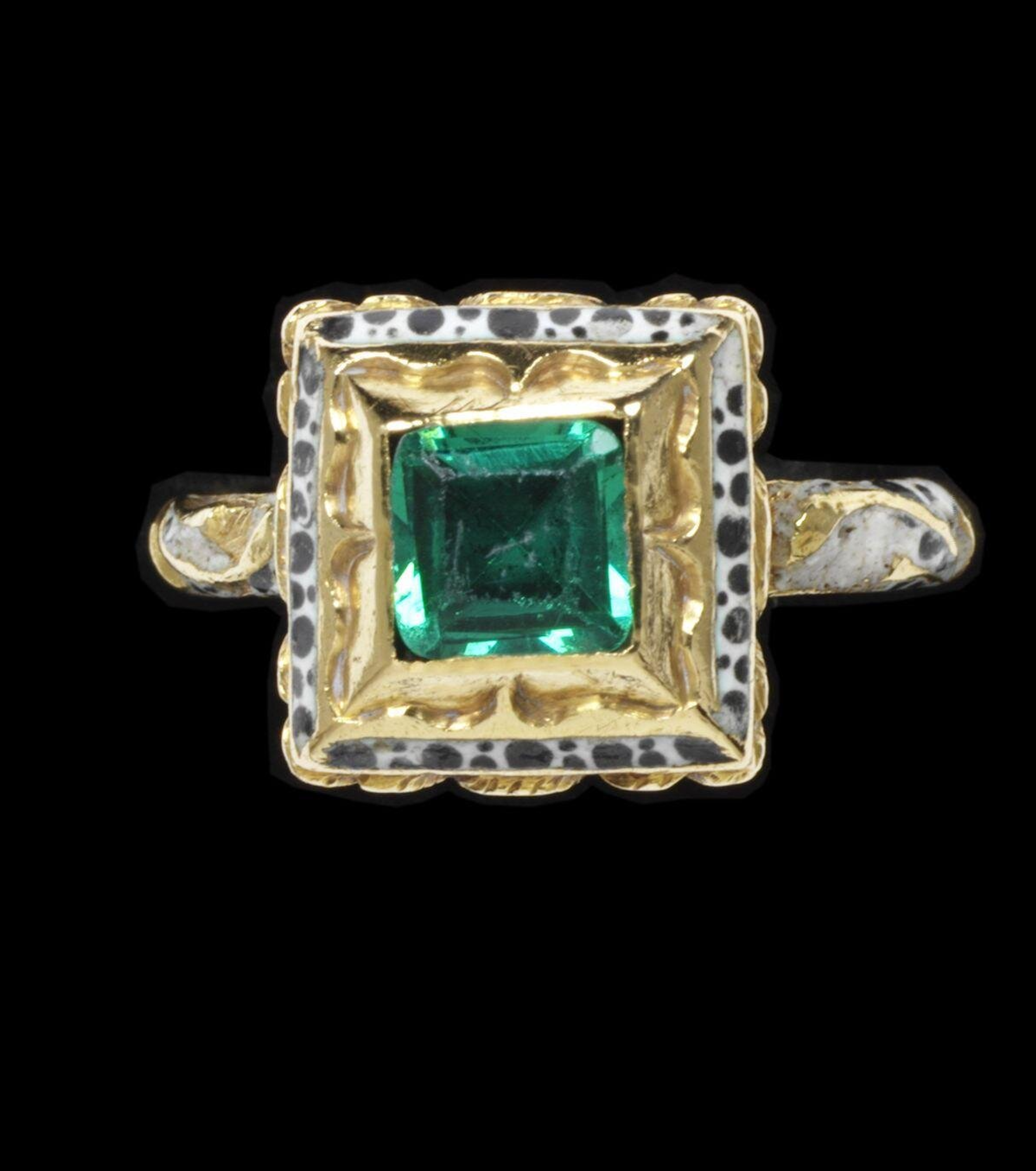
Enameled gold ring set with glass emerald, 1650-1700. The Victoria & Albert...
In 1675, Englishman George Ravenscroft took faux gems to the next level when he patented a glassmaking technique for lead glass. It was around this period that lapidaries fully embraced a new ways to facet and set diamonds. Rose-cut diamonds became a feature of jewelry design just as Ravenscroft’s highly glossy and reflective glass hit the market. And “paste” jewelry was born.
Paste is glass that has been cut to look like a gem.
To produce paste gems, the lead glass was finely pulverized and then left colorless (for those faux diamonds) or mixed with pigments to create imitation gemstone. The mixture was then cast in moulds and finally polished. The simulated stone was set in a closed-back mount, which was often foil-backed to further enhance the gemstone’s color and light refracting capabilities. By candlelight, it was nearly impossible to discern the real from the the paste.

Two-tier colored paste necklace, 1800-1850. This style of combining dissimilar but complementary...
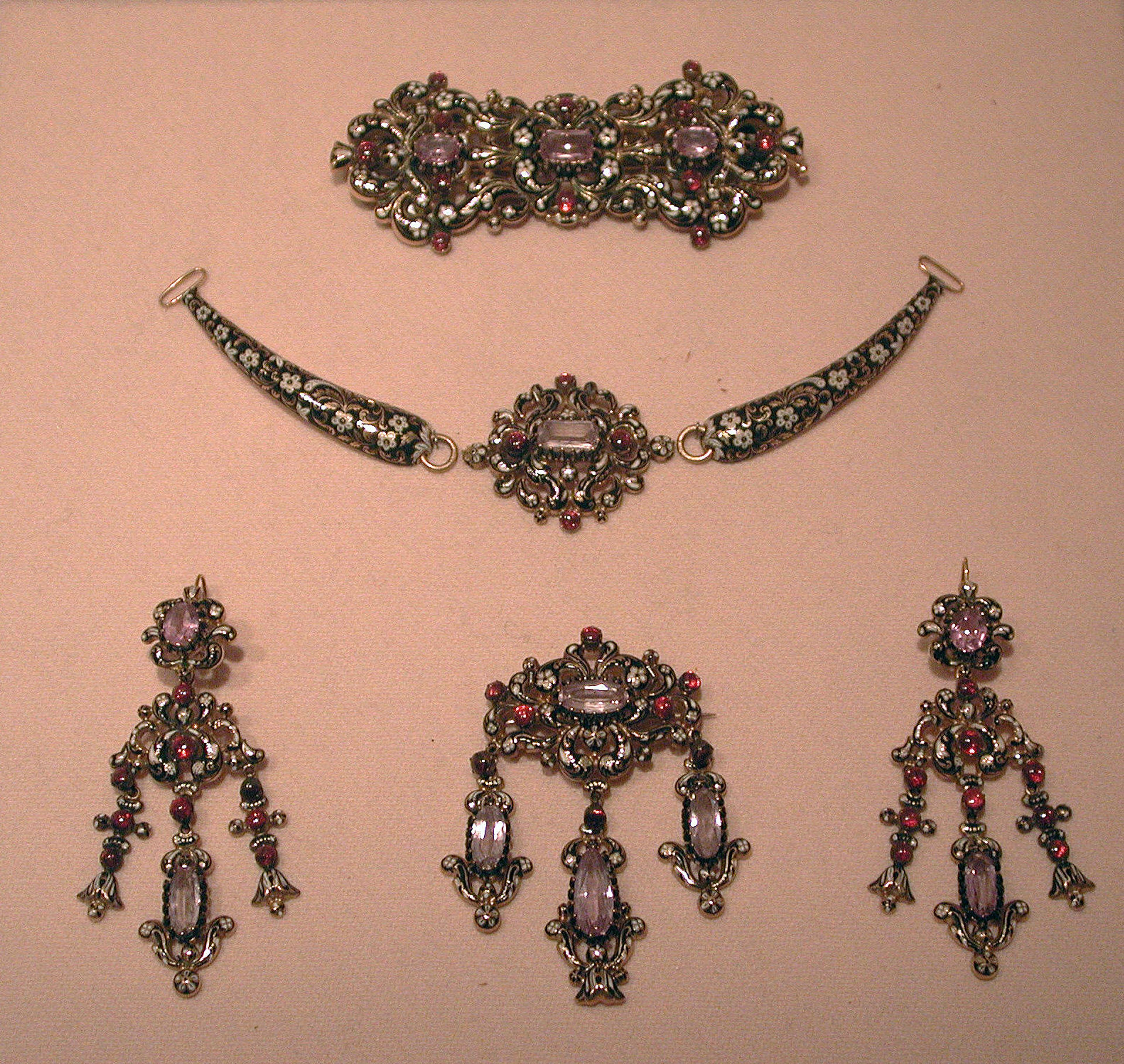
Swiss-made paste parure, c. 1840-1850. A parure was a jewelry set designed...
In 1767, in France, the Association of Bijoutiers Faussetiers (fake jewelers) was established and quickly numbered more than 300 members dedicated to the production of paste jewelry. That high member count is a testament to the demand for paste jewelry.
Their imitations were just as carefully crafted as the originals they sought to copy. In the 18th and 19th paste jewelry was all the rage. Not only did it enable middle-class consumers to get the look of high-end jewelry, but paste was also the go-to travel jewels for the upper class. Even in those in the very upper echelons of society had paste jewels in their collections. For example, Louis XV’s mistress Madame du Barry who had an oversized jewelry budget, had a pair of fashionable girandole earrings made from blue paste.

Rose-cut rock crystal badge, c. 1690. The Royal Collection Trust.
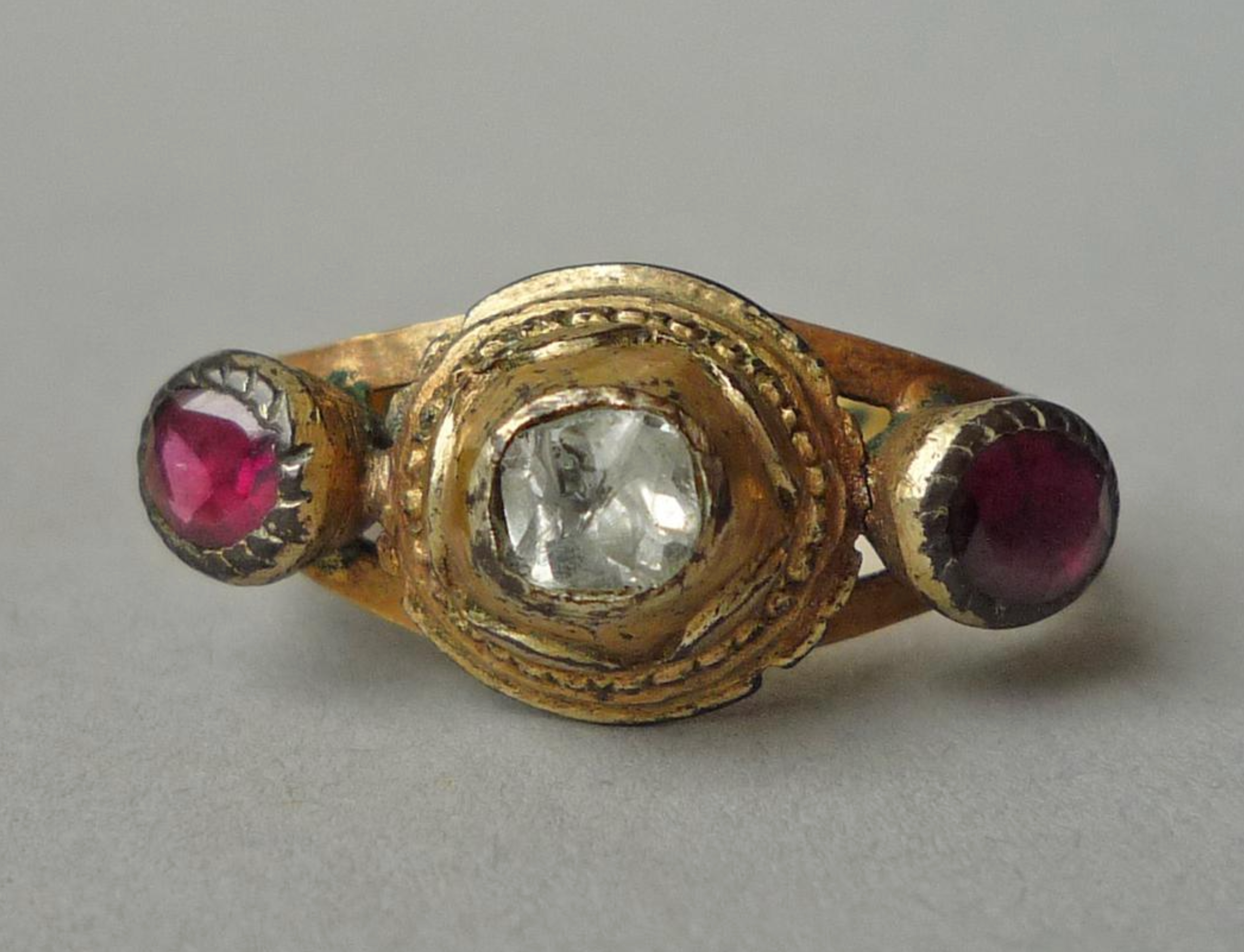
Italian rock crystal ring, 18th century. The British Museum.
imitating the diamond
Although the first imitation colored gems dates back to antiquity, it wasn’t until the 17th century that there was an interest in faux diamonds. No one cared much about faux diamonds because, until then, no one cared about real diamonds. Jewelry historians sometimes say that there were two periods in the history of jewelry — Before the Diamond and After the Diamond.
By the 17th century, new diamond sources coupled with new techniques in cutting the stone conspired to make the diamond “the” stone, edging out the colored gemstone competition. As the popularity of diamonds grew, so did desire for imitations. Because there was no suitable colorless glass, jewelers initially turned to rock crystal (a transparent quartz) to get the look.
The word “rhinestone” was coined in reference to the rock crystals found in the Rhine River.
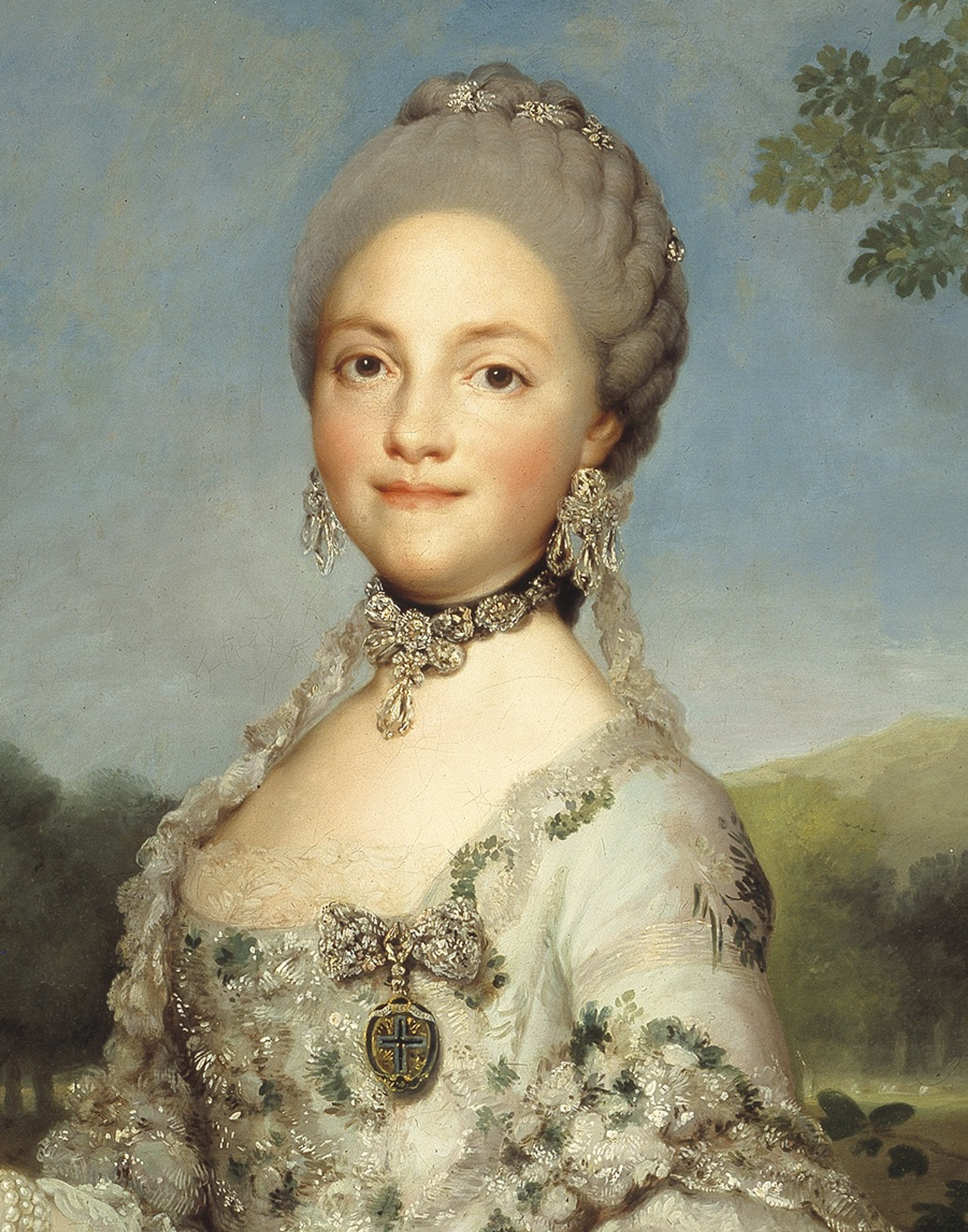
Wearing large girandole earrings (dangling with a large central stone) in the...
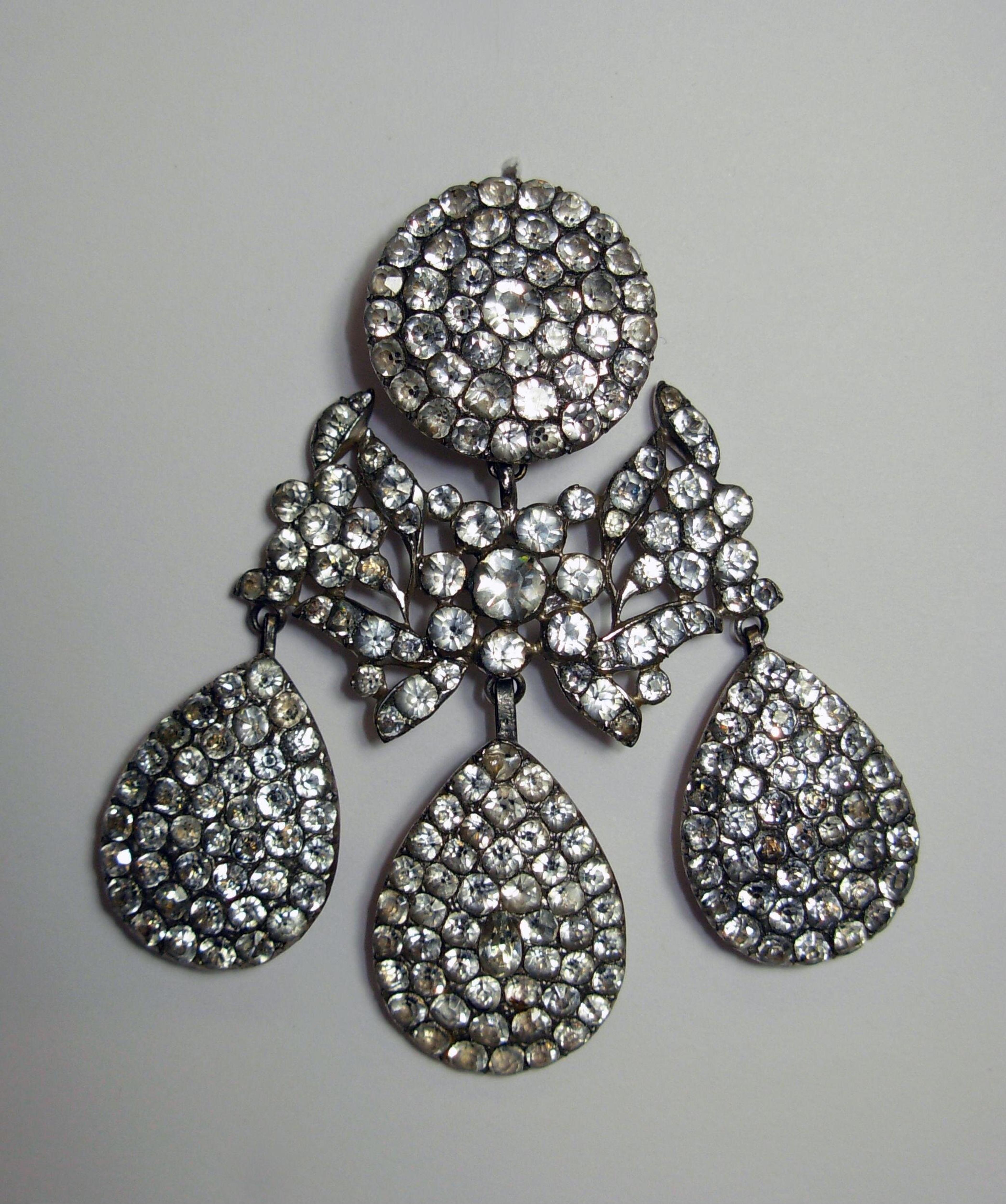
Paste girandole earrings, 1800-1860. Each paste is in a closed setting with...
In the 18th century, Alsatian jeweler Georg Friedrich Strass improved on the look of the faux diamonds by coating the lower side of lead glass with metal powder (In many European languages rhinestones are still called “strass” in Georg's honor). In 1730, Strass opened a factory to make his artificial gemstones and by 1734, he received the title “Royal Jeweler.” His faux diamonds were so popular that Strass was able to retire in his early 50s after 25 years in the business.
The style was for stones to be set with as little visible metal as possible — just a mass of gemstones. This was nearly impossible with real diamonds — they were just too hard to cut and set without visible metals, but pastes are softer and can be cut so that each stone fits perfectly next to one another. It wasn’t necessarily an easy task. Many jewelers who worked in paste were more skilled than their natural gemstone counterparts. That level of craftsmanship contributed to the appreciation for pastes.
In 1891, Daniel Swarovski made another huge leap in the faux diamond technology. His glass-cutting machine made quick work of the once laborious hand-cutting process for the quartz crystals. After traveling to Vienna to see the first exhibition on electricity, he spent several years developing a “comb” that used electricity to facet 36 stones at the same time.
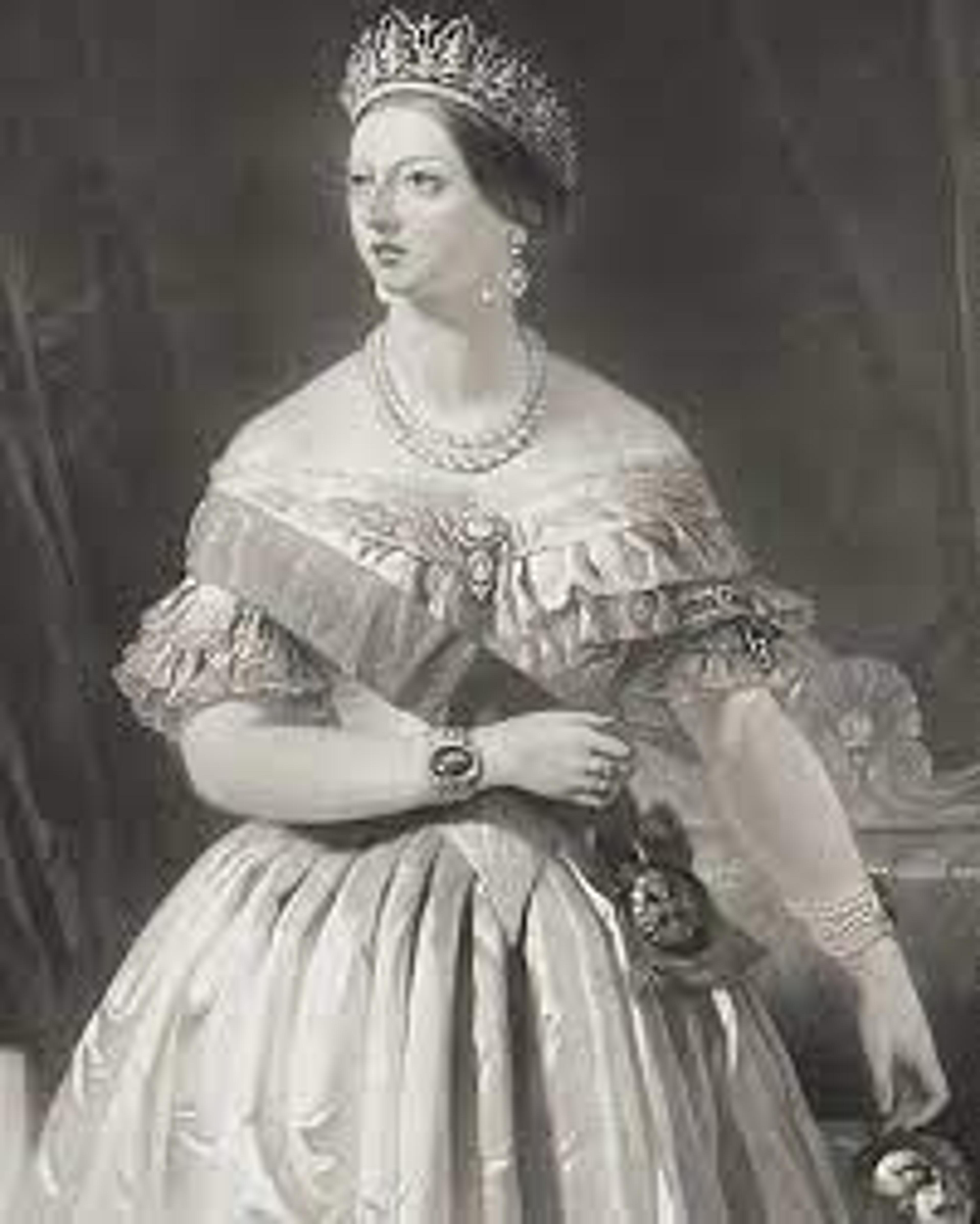
Queen Victoria wearing the opal and diamond tiara designed for her by...
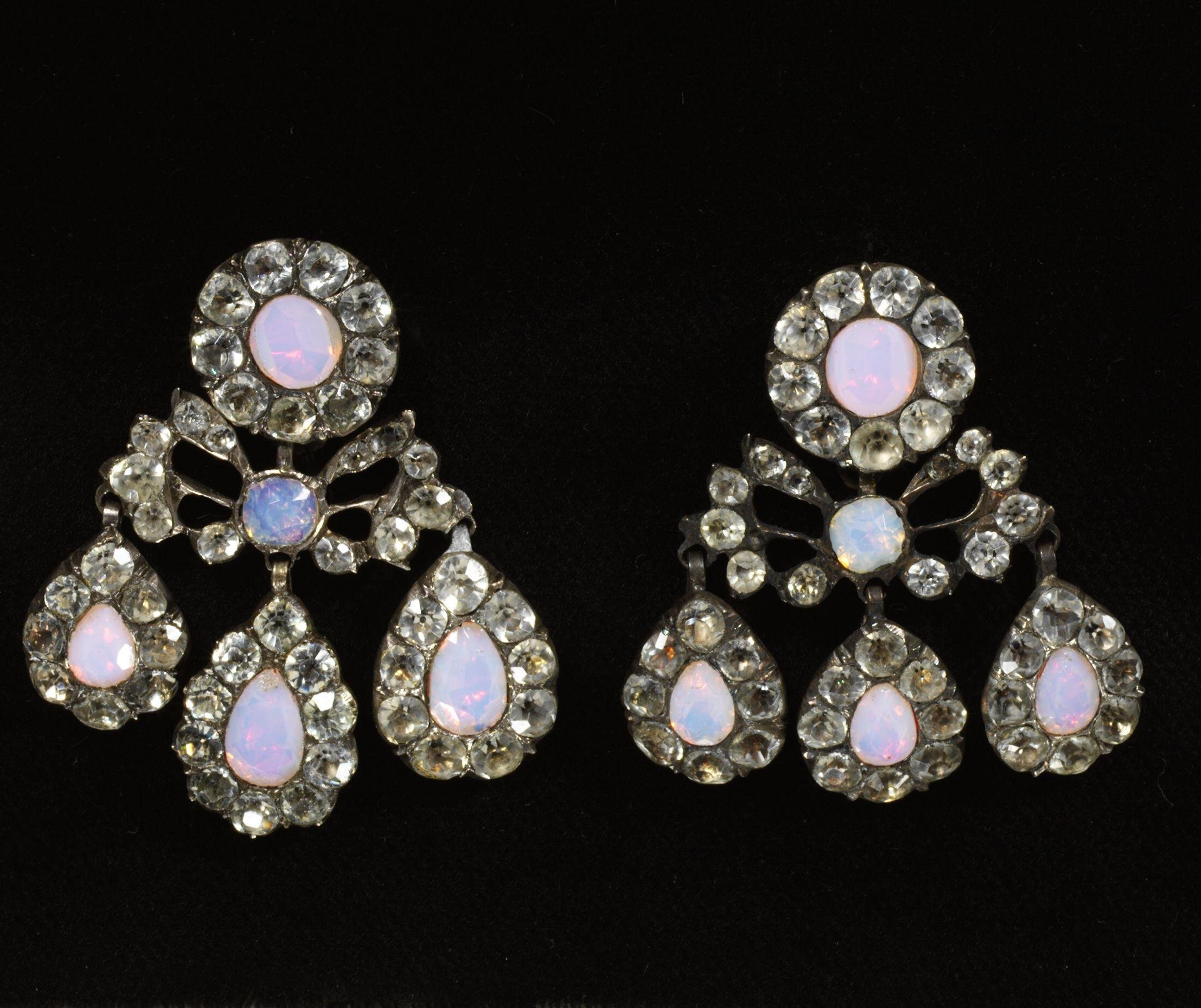
French opaline and white paste girandole earrings, 1760. The Victoria & Albert...
Opaline
For most of history, the opal was one of the world’s rarest gemstones. From antiquity until the late nineteenth century, nearly all the stones were found in the mines of (present-day) Slovakia. In 35 B.C., Mark Antony, who loved the stone, was obsessed with a hazelnut-sized opal in the possession of a Roman senator, Nonius. The stone would have been worth the price of villa in posh section of Rome. When Antony pressured him to sell (he wanted to gift it to Cleopatra), Nonius fled the city — preferring life without Rome to life without his opal.
It wasn’t only Mark Antony who had a thing for the opal. The central stone on the thirteenth-century crown of the Holy Roman Emperor was an opal said to be the cold of snow (while the crown exists today in the Imperial Treasury in Vienna, the opal has since been lost). As a New Year’s gift in 1584, Queen Elizabeth I, received an opal parure (jewelry set) from one of her favorite courtiers. Napoleon gave Josephine a vibrant red opal that was named “The Burning of Troy” saying that he chose it because she was his Helen (After Josephine's death, the opal disappeared).
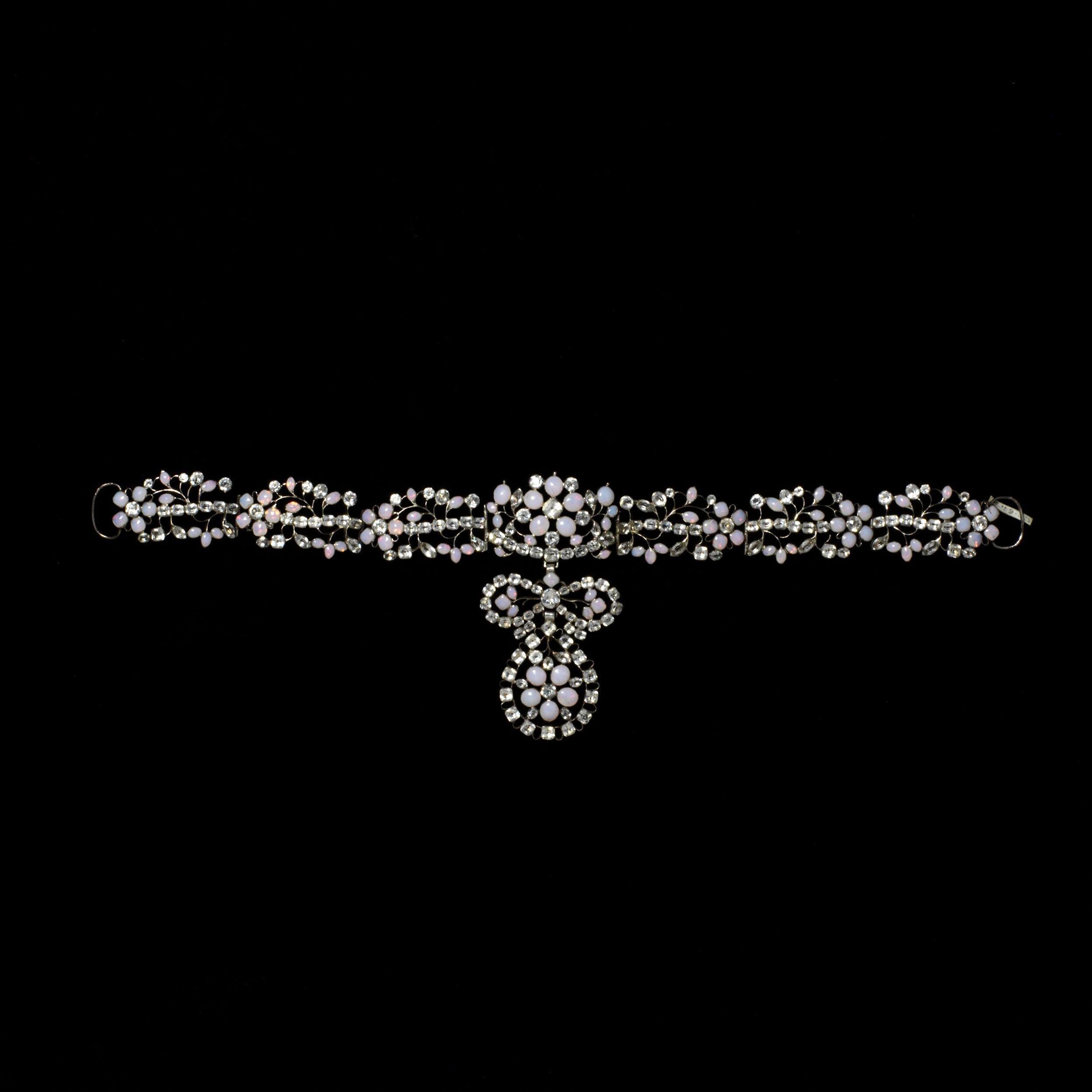
An French opaline choker made from pink foil set beneath milky blue...

Opaline and colorless paste set in silver, 1770. The Victoria & Albert...
The stone’s rarity meant that the opal was accessible only for the elite, so when an opaque milky white glass was developed, opal fans were eager to get the look. It was a complex process where glass containing tin, arsenic or phosphorus oxides were carefully cooled and minute particles separated out giving the glass a milky appearance. The best opaline jewelry was made between 1780-1820 in France and England. Opaline jewelry was a favorited choice for the daytime look for Georgian women.
By the 1850s, opals were discovered in Australia. Those stones flooded the jewelry market to an extent that imitations were unnecessary.
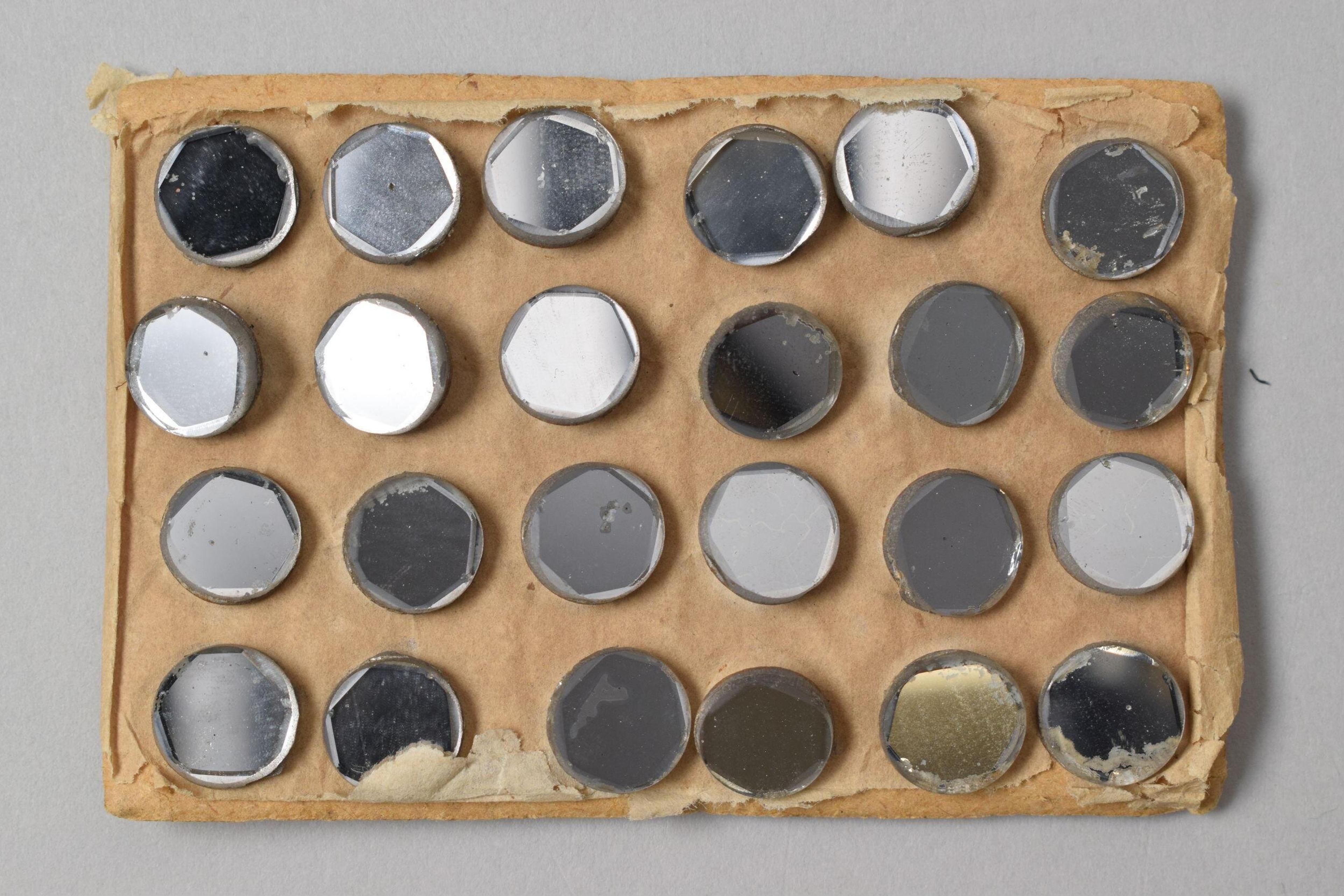
Vauxhall mirrored glass buttons, 1825-1850. The Victoria & Albert Museum.
Vauxhall glass
For Londoners who wanted some sparkle, with a price tag smaller than paste, Vauxhall glass was the answer. From 1785 to 1859, the Vauxhall Gardens was one of the most popular sites in London. It was more than a garden, there were tightrope walkers, hot-air balloon ascents, concerts and fireworks. To mark a visit, one could buy mirrored glass jewelry from the nearby south London glass factories. Unlike paste jewelry, which was made to resemble gemstones and set in precious metals, Vauxhall glass was crafted in the shapes of butterflies, snowflakes and flowers with minimal metal mountings.

Coco Chanel wearing a costume jewelry bracelet, 1920. Wikimedia Commons.
By the 1900s, the Industrial Age, brought with it new technologies for manufacturing faux gems and edged out the artistry of the 18th century paste. The technique hadn’t completely died out. In the 1920s, designers like Coco Chanel and Elsa Schiaparelli used faux gems to craft over-the-top high fashion pieces. It was the beginning of what was dubbed “costume jewelry” and the end of traditional paste.
